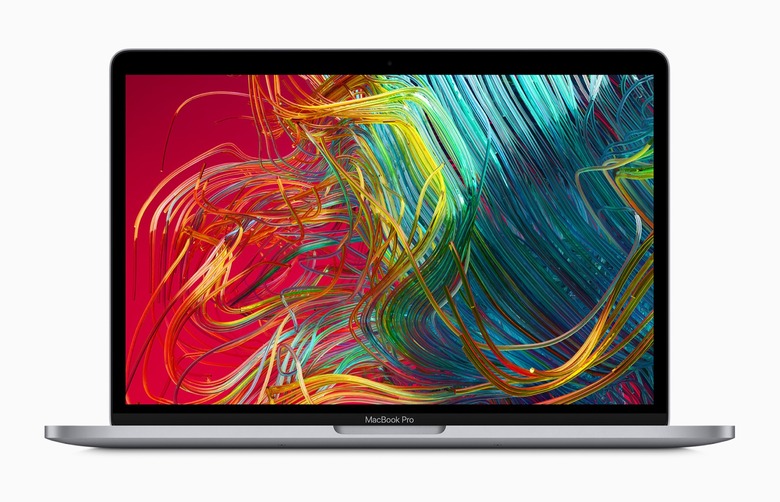New 13-Inch MacBook Pro (2020) - How To Choose Wisely
Apple's new 13-inch MacBook Pro follows its bigger sibling with an improved keyboard and an uptick in performance, but there's a bigger decision to be made than just screen size. The 2020 refresh of the smaller MacBook Pro creates two distinct tiers within the 13-inch screen size, and the differences between them are arguably more obvious than ever. Here's what you need to know...
At the entry-level, some 13-inch MacBook Pro compromises
Apple's most affordable new 13-inch MacBook Pro configurations still start at $1,299, and on the face of it you're getting a good deal. The starter machine gets a 1.4GHz quad-core Core i5 processor with up to 3.9GHz Turbo Boost, along with 8GB of memory and 256GB of SSD storage.
That's twice the storage as the old entry-level notebook, which is a welcome improvement. The $1,499 version keeps the same processor and memory, but doubles the SSD again, to 512GB.
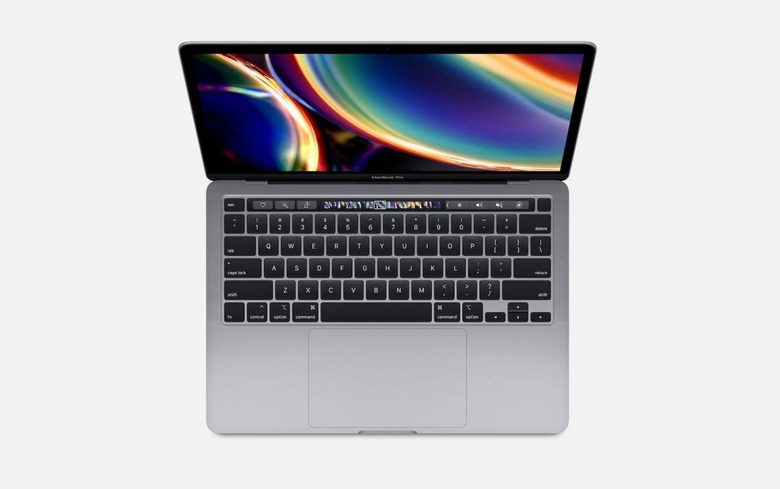
However it's worth noting there are some caveats. While it's a quad-core CPU not a dual-core, it's actually Intel's 8th generation Core i5, not the latest 10th generation. If you want that, you'll need to step up to the $1,799 configuration.
Indeed, Apple's only processor upgrade option on those two entry-level 13-inch MacBook Pro models is the 1.7GHz quad-core Core i7, for $300 more. That gets you up to 4.5GHz of Turbo Boost, but it's still the 8th generation processor.
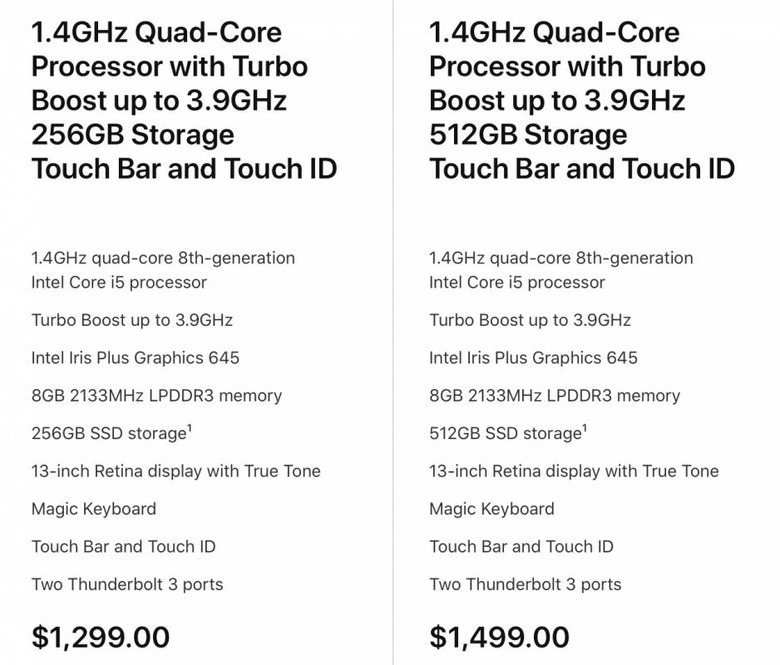
The other consideration to bear in mind is the memory type. In the cheaper models, Apple is still using the 2133MHz LPDDR3 memory. Again, there's an upgrade option for 16GB of it, for $100, but if you want the newer, faster memory you'll need to step up to the more expensive base configuration first.
The "real" new 13-inch MacBook Pro
That configuration is the $1,799 model. While it looks, outwardly, just like the cheaper versions, it gets a 2.0GHz quad-core 10th generation Core i5 processor. That has up to 3.8GHz Tubo Boost and Intel Iris Plus graphics, not Iris Plus Graphics 645 as in the other notebooks.
16GB of memory comes as standard, but it's now the 3733MHz LPDDR4X type. 512GB of storage is standard, too, and you get four Thunderbolt 3 ports rather than just two as on the two cheaper configurations.
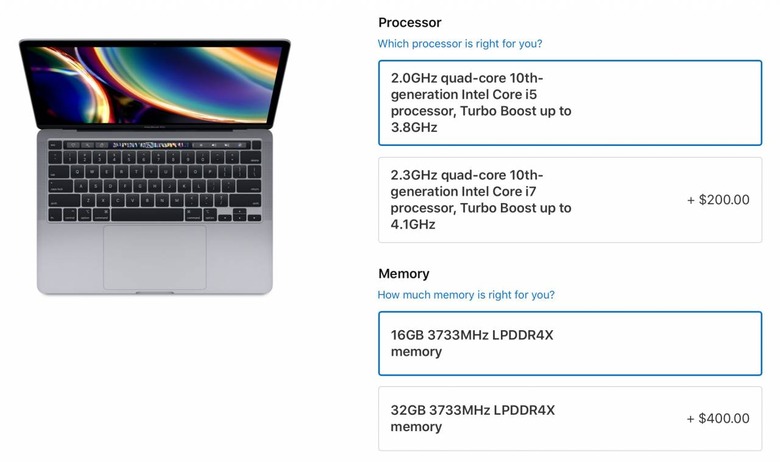
The upgrade options for custom builds are better as well. $200 more gets you the 2.3GHz quad-core 10th generation Core i7 processor, for example. That has Turbo Boost speeds of up to 4.1GHz.
If you want 32GB of memory, meanwhile – the first time it's been offered on a 13-inch macOS notebook – that's a $400 upgrade. As you'd expect, it's the 3733MHz LPDDR4X type, too.
Finally, you can max out the storage on this upper configuration to 4TB of SSD. It'll cost you $1,200 to do that, mind, so almost as much as a whole new 13-inch MacBook Pro by itself. This 10th generation Core-based version is the only one with the 4TB option; the others max out at 2TB.
For external displays, go big
If you're looking to drive an external screen, that might change which configuration of 13-inch MacBook Pro you choose from. The more affordable, 8th generation Core-based models can support up to one 5K external display with 5120 x 2880 resolution, at 60Hz, and at over a billion colors. Alternatively, it can drive two external 4K displays with 4096 x 2304 resolution, at 60Hz, at millions of colors.
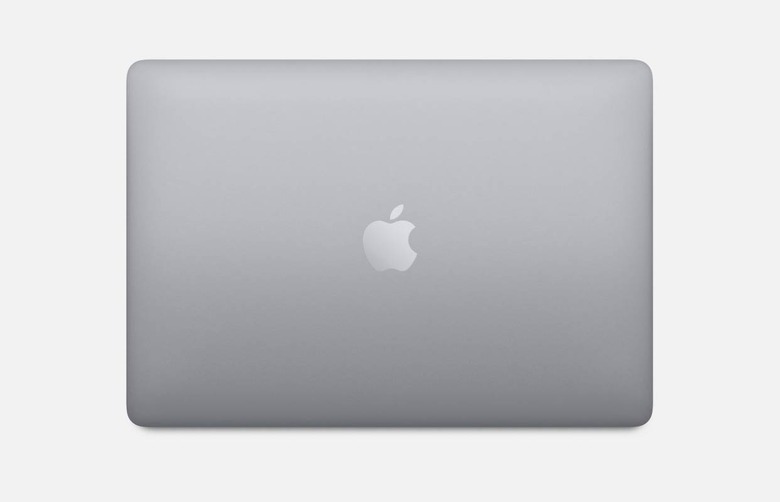
The 10th generation Core-based models, however, improve on that with their newer GPUs. They can also drive an external 6K display with 6016 x 3384 resolution, at 60Hz, with support for over a billion colors. You also get four Thunderbolt 3 ports, versus just two on the 8th generation Core-based machines.
For longevity, better to open your wallet
Apple's entry-level machines are competitively priced, but it's tough to stomach buying an 8th generation Core-based notebook in 2020. The reality is, if you want to extend the amount of usable lifespan you get from your new 13-inch MacBook Pro, you should probably opt for one of the 10th generation Core-based models.
Yes, that means you're paying from $1,799. All the same, with the extra storage, speed, and connectivity versus the more affordable models, that $500 premium is undoubtedly worth it. Orders are available from today, and the premium configurations will ship from May 14, Apple says.

